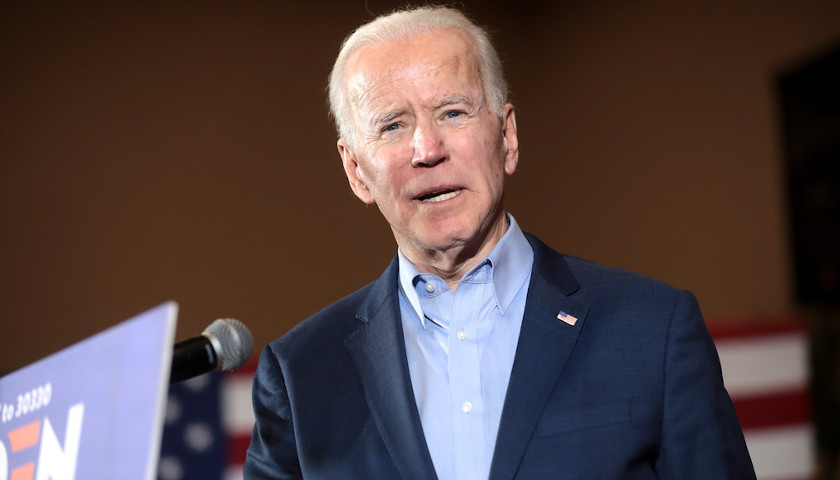by Andrew Trunsky
As the U.S. climbs out of a once-in-a-century pandemic, rising prices have led to increasing worry that rapid inflation could be just over the horizon.
Americans have already witnessed higher prices in the past few months, with everything from gasoline to lumber to basic home items jumping in cost. The increases, partially fueled by non-existent interest rates and record government spending, could lead to inflation that the U.S. has not seen in decades, experts say.
 “In the short term, consumers can expect to see rising prices across the board,” Henry Olsen, a senior fellow at the Ethics and Public Policy Center and a columnist at The Washington Post, told the Daily Caller News Foundation. “I expect in the next few months people will be getting sticker shocked in virtually all aspects of their life.”
“In the short term, consumers can expect to see rising prices across the board,” Henry Olsen, a senior fellow at the Ethics and Public Policy Center and a columnist at The Washington Post, told the Daily Caller News Foundation. “I expect in the next few months people will be getting sticker shocked in virtually all aspects of their life.”
Peter Schiff, the chief economist and global strategist of Euro Pacific Capital, warned in an interview with the DCNF that the “very substantial” decline Americans could witness in their standard of living is a result of heightened federal spending throughout the pandemic.
“People are going to be paying higher insurance, they’re going to be paying higher property taxes, local tax, utility rates are going to go way up,” Schiff said. “The 100% cause of inflation is the government … It’s when the government spends money that it doesn’t collect in taxes and then the Federal Reserve monetizes the resulting deficits by printing money.”
Just A Blip?
Others, however, have urged caution when looking at the inflation that has taken place so far. An April report by the Brookings Institution noted that the inflation data for the next year may be slightly misleading, since it is typically measured over a 12-month period and prices dropped throughout the pandemic.
“If we focus on the rebound in prices since [March 2021] without appreciating that it was just partially returning prices to their prior level, it may seem like inflation is rising out of control,” the report outlined. “Even if prices remained perfectly flat over the next few months, it would look like inflation is rising as the 12-month-ago base comparison is actually going down.”
But even if the inflation spike occurs just over the short-term, Olsen said that an increase relative to that in the late 1970s would still upend Americans’ lives nonetheless.
“A short period of inflation of that level will be shocking to most people because they’ve never lived through it,” Olsen said, noting how the U.S.’ money supply increased by over $4 trillion even before President Joe Biden’s relief package. Because of that, he added there was little reason to believe that the inflationary spike would even be confined to the near term.
“There’s too much money chasing too few goods, and people can’t expand supply,” Olsen said. “I don’t see why inflation should go away in September or December because this isn’t a case largely of a short-term pandemic-induced collapse.
“This is the case of trillions of dollars that have nowhere to go except to bid up the prices for goods,” he said.
Who’s Responsible?
While Biden took office nearly four months ago, Olsen said that the price increases seen so far could not be directly attributed to him and his American Rescue Plan.
“Around the world, governments have put record amounts of money into circulation in one year,” he said. “This was all pre-Biden.”
“Trillions of dollars in the United States, over a trillion dollars in the E.U. … That’s what’s behind the inflation we’re seeing right now,” Olsen added. “When the developed world is basically throwing money at something and people, it’s more than people can absorb, and they bid up prices.”
Olsen discussed that since the pandemic largely prevented Americans from spending money on services or taking vacations, they wound up saving money instead, contributing to last year’s decline in prices. A Bureau of Economic Analysis report from April showed that personal income rose 21.1% and spending jumped 4.2% in March as a result of the accelerating rebound from the pandemic, adding more money to the economy aside from the stimulus.
“The Biden money is on top of all of that,” Olsen said. “We’ve already had inflationary pressures.”
Though Biden’s relief package may not be the primary contributor to the rise in prices witnessed in recent weeks, his administration has proposed a $2.3 trillion American Jobs Plan and $1.8 trillion American Families Plan. If both get signed into law as written ahead of the 2022 midterms, then his administration will have pumped an unprecedented $6.1 trillion into the economy in under two years.
“If Biden sees his six trillion, you’re going to see fuel added to the fire,” Olsen warned. “What we’re seeing now is largely not a result of the Biden policies … but if [Biden] is talking about increasing government spending by $600 billion a year for as far as the eye can see, that will add to the inflationary pressures already existing.”
– – –
Andrew Trunsky is a reporter at Daily Caller News Foundation.






It already is. Just look at the rate of inflation and the substantial increase in goods.